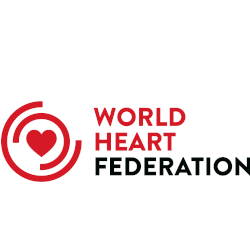Original Research
Regional and Sex Differences in the Prevalence and Awareness of Hypertension: An H3Africa AWI-Gen Study Across 6 Sites in Sub-Saharan Africa
- F. Xavier Gómez-Olivé
- Stuart A. Ali
- Felix Made
- Catherine Kyobutungi
- Engelbert Nonterah
- Lisa Micklesfield
- Marianne Alberts
- Romuald Boua
- Scott Hazelhurst
- Cornelius Debpuur
- Felistas Mashinya
- Sekgothe Dikotope
- Hermann Sorgho
- Ian Cook
- Stella Muthuri
- Cassandra Soo
- Freedom Mukomana
- Godfred Agongo
- Christopher Wandabwa
- Sulaimon Afolabi
- Abraham Oduro
- Halidou Tinto
- Ryan G. Wagner
- Tilahun Haregu
- Alisha Wade
- Kathleen Kahn
- Shane A. Norris
- Nigel J. Crowther
- Stephen Tollman
- Osman Sankoh
- Michèle Ramsay
- as members of AWI-Gen and the H3Africa Consortium
Abstract
Background: There is a high prevalence of hypertension and related cardiovascular diseases in sub-Saharan Africa, yet few large studies exploring hypertension in Africa are available. The actual burden of disease is poorly understood and awareness and treatment to control it is often suboptimal.
Objectives: The study sought to report the prevalence of measured hypertension and to assess awareness and control of blood pressure among older adults in rural and urban settings in 6 sites located in West, East, and Southern Africa. In addition, we examined regional, sex, and age differences related to hypertension.
Methods: A population-based cross-sectional study was performed at 6 sites in 4 African countries: Burkina Faso (Nanoro), Ghana (Navrongo), Kenya (Nairobi), and South Africa (Agincourt, Dikgale, Soweto). Blood pressure measurements were taken using standardized procedures on 10,696 adults 40 to 60 years of age. Hypertension was defined as systolic blood pressure ≥140 mm Hg or diastolic blood pressure ≥90 mm Hg or taking antihypertensive medication.
Results: The mean prevalence of hypertension ranged from 15.1% in Nanoro to 54.1% in Soweto. All 3 of the South African sites had a mean prevalence of hypertension of over 40.0%, significantly higher than in Nairobi (25.6%) and Navrongo (24.5%). Prevalence increased with age in both sexes and at all sites. A significantly higher prevalence of hypertension was observed in women in Agincourt, Dikgale, and Nairobi, whereas in Nanoro this trend was reversed. Within the hypertensive group the average proportion of participants who were aware of their blood pressure status was only 39.4% for men and 53.8% for women, and varied widely across sites.
Conclusions: Our study demonstrates that the prevalence of hypertension and the level of disease awareness differ not only between but also within sub-Saharan African countries. Each nation must tailor their regional hypertension awareness and screening programs to match the characteristics of their local populations.
Highlights
- Stark differences in hypertension prevalence, awareness, and control across Africa.
- Hypertension prevalence ranges between 15.1% and 54.1% in sub-Saharan Africans.
- Only 47.7% of hypertensive individuals knew their blood pressure status.
- Levels of blood pressure control ranged from 30.0% to 61.1%.
- Urgent need for localized monitoring and treatment of blood pressure.


